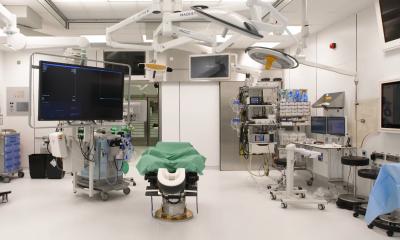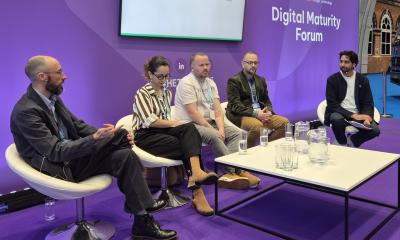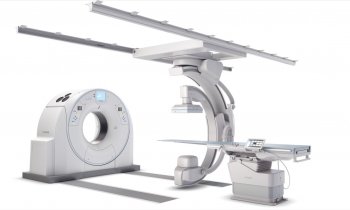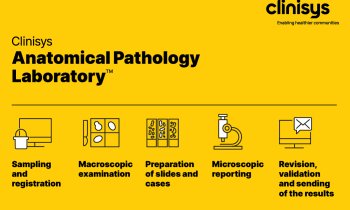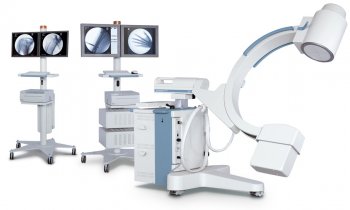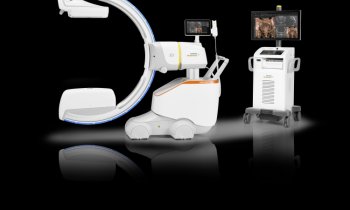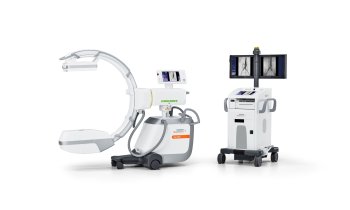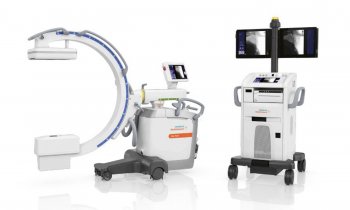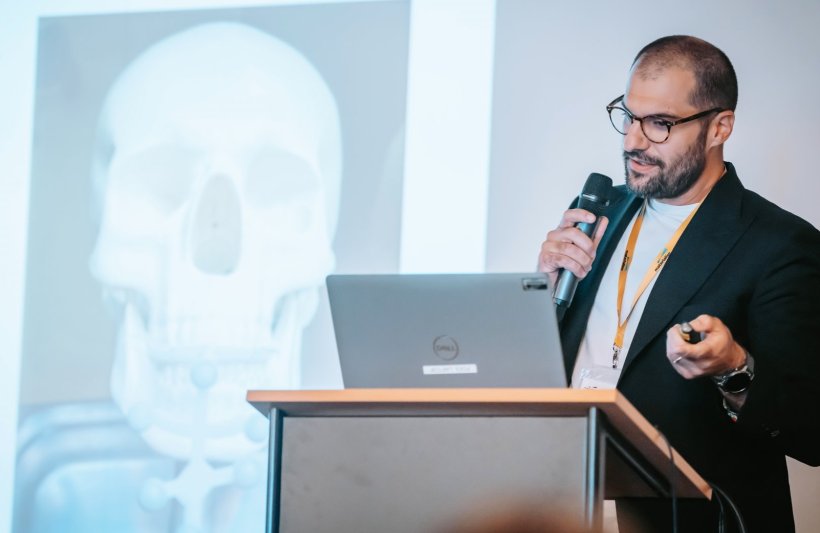
Image source: Materialise
News • CMF summit
New standards in personalized facial surgery
At the CMF Innovation Summit, held on September 25-26 and hosted by Materialise in Leuven, Belgium, more than 60 surgeons across Europe and Brazil gathered to discuss how personalization, digital planning, and emerging technologies are reshaping craniomaxillofacial (CMF) care.
The two-day event brought together leading experts to explore how digital technologies are reshaping surgical planning, precision, and patient outcomes. Through the presentation of case studies and evidence-based data, one message was clear: what was once innovation has now become everyday practice.
In his keynote, Dr. Thomas Kofod, Chair of Oral and Maxillofacial Surgery at Rigshospitalet in Copenhagen, shared how his department now uses 3D planning in 100% of cases, more than 1,000 reconstructions to date. “Personalization is about safety for patients,” Kofod emphasized. “From the beginning, we wanted to make it available to all patients, not only the complex cases.” For Kofod, full-scale adoption of patient-specific planning and implants has changed the role of technology from optional to indispensable. His experience underscores a broader shift across Europe: digital precision is not replacing surgical skill; it’s amplifying it.
Recommended article

Article • Technology applications
Medical 3D printing: from niche to mainstream
From personalized medical guides and implants to advanced surgical planning solutions: 3D printing and visualization has seen considerable growth over the past years and is already making a significant impact in healthcare. AI, cloud, and virtual/augmented reality technologies show promise to further advance the number of applications.
Prof. Max Heiland, Medical Director at Charité Berlin, challenged more than half a century of orthodontic convention with his department's "surgery first" approach for specific patients. Using virtual planning with Mimics Enlight CMF, his team performs orthognathic surgery before orthodontic correction, cutting treatment time by nearly two years for this subset of patients. “With ‘surgery first,’ patients experience immediate improvement in facial profile and satisfaction,” said Heiland. “Virtual planning increases transparency between surgeon, orthodontist, and patient, and improves precision even in complex osteotomies.”
Patient-specific solutions give us bespoke reconstructions that deliver better cosmetic and functional results. The clinical engineers bring a lot to the table
Vladimír Machoň
Clinical data from Charité show that digitally planned, patient-specific implants improve both surgical stability and airway outcomes. In a retrospective study on sleep apnea patients, Heiland’s team observed a mean reduction in apnea-hypopnea index from 26.5 to 5.3, underscoring the functional potential of virtual workflows.
For Dr. Hetty Mast, Head and Neck Surgical Oncologist at Erasmus MC in Rotterdam, personalization is key not only for precision but also for speed. Her upcoming research, submitted to Oral Oncology, examines how 3D planning impacts surgical timelines and long-term quality of life after mandibular reconstruction. “In oncological reconstruction, timing is everything,” said Mast. “Patient-specific printed plates and cages allow us to stay within strict treatment windows without compromising outcomes.” Her team’s semi-automated workflows demonstrate how technology can balance surgical complexity with the realities of clinical scheduling, offering both efficiency and predictability.
Temporomandibular joint (TMJ) reconstruction remains among the most complex procedures in CMF surgery. Both Dr. Vladimír Machoň (Charles University, Prague) and Mr. Sherif Bayoumi (Spire Manchester Hospital) highlighted how personalization is helping to overcome longstanding surgical barriers. Machoň shared real-world lessons from complex TMJ cases, including complications and how personalized implants helped resolve them. “These are difficult cases,” he said, “but digital planning allows us to anticipate challenges and plan for long-term function.”
Bayoumi presented tumor reconstruction cases combining TMJ replacement with free flap reconstruction, demonstrating how personalized implants improve both function and aesthetics. “Patient-specific solutions give us bespoke reconstructions that deliver better cosmetic and functional results,” he said, adding, “The clinical engineers bring a lot to the table.”
Dr. Valerio Ramieri of Ortognatica Roma and Dr. Javier Gutiérrez of Facialteam Barcelona represented a growing trend toward minimal invasiveness supported by precision tools. Ramieri highlighted how tooth-supported surgical guides can reduce exposure and improve accuracy, referring to them as “a bridge between efficiency and precision.” Gutiérrez, who has performed over 2,500 minimally invasive orthognathic procedures, argued that minimally invasive orthognathic surgery (MIOS) “isn’t a niche technique anymore, but a new standard in development.” His experience shows faster recovery, reduced pain, and greater patient satisfaction, proving that less can indeed be more.
Longtime pioneer Prof. Thomas Schouman from AP-HP Pitié-Salpêtrière in Paris shared insights from more than a decade of using porous implants in CMF reconstruction. Once considered experimental, these materials are now integral to managing complex defects. Schouman presented new clinical data demonstrating how porous structures enhance osseointegration while maintaining flexibility in reconstructive planning.
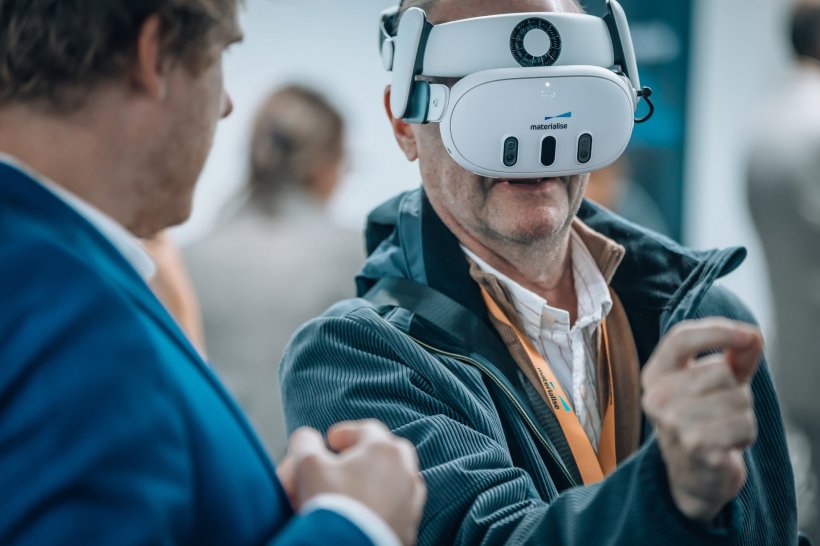
Image source: Materialise
Rounding out the summit, Dr. Diego Rossi and Dr. Alessandro Remigio Bolzoni from Milan’s IRCCS Fondazione Policlinico presented findings from one of Europe’s first studies on augmented and extended reality (AR/XR) in CMF surgery. Dr. Rossi shared clinical results on CAD CAM planning, emphasizing that while 3D technologies enhance precision, optimal outcomes still depend on the surgeon’s clinical knowledge and aesthetic judgment regarding facial harmony and proportions. Dr. Bolzoni presented promising findings on optimal see-through AR systems, demonstrating real-time visualization capabilities. “We are now moving beyond the hype,” he said. “Our data show AR and XR potential to enhance accuracy and confidence in real surgical conditions.”
If one theme united all sessions, it was that digital transformation in CMF surgery is being driven not by technology companies, but by surgeons themselves. From personalized implants to virtual planning, each innovation shared at the CMF Innovation Summit 2025 was backed by evidence, not speculation.
As Dr. Kofod summarized, “Personalization, education, and standardization are the pillars for the next decade of care.” During the summit in Leuven, that future no longer felt distant. It felt like the new normal.
Source: Materialise
14.10.2025



